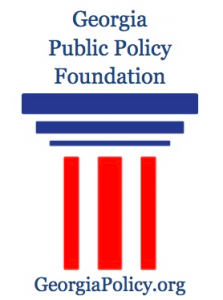Study: Voucher and ESA Programs Would Not Harm Ga. Public School Students
Students who exercise choice using their share of state funding actually raise a public school's district’s financial capacity to educate its remaining students
In fact, students who remain in their public schools are not financially “shortchanged” when a student leaves with his or her state funding, according to a new Issue Analysis released by the Georgia Public Policy Foundation.
In “The Economics of Building a Voucher or Educational Savings Account Program in Georgia,” Foundation Senior Fellow Jeffrey Dorfman, a professor of economics at the University of Georgia, examined how implementing vouchers and educational savings accounts (ESAs, also known as educational scholarship accounts) would affect public school students in Georgia’s 159 county school districts.
Dorfman concludes that providing a student with a voucher or ESA in an amount equal to a district’s state funding per pupil would actually raise the district’s financial capacity to educate the remaining students. Such programs “would remove less money than the district saves by having fewer students to educate.”
State funding per pupil ranges from a low of $3,092 to a high of $11,424. When Dorfman estimated each district’s marginal cost – the cost to add a student or saved when educating one student fewer – he found they were uniformly higher than this state funding. The marginal cost was $3,825 per pupil more than state funding for the median district; it was at least $1,000 higher for 155 of the 159 counties.
“Importantly, the marginal cost is higher than both average variable cost and state funding per pupil in almost every district,” Dorfman found. Variable costs are those that vary as student enrollment changes, such as transportation, supplies and teacher salaries.
“If vouchers or ESAs remove funding from a school’s budget at a rate less than the marginal cost, the school district is in a stronger financial position, able to spend more money on the average remaining student,” Dorfman notes.
In all but the smallest districts, vouchers or ESAs could be funded up to the level of the average variable cost “and leave more than enough money to educate the remaining students at the same expenditure level as before,” he found.
“The empirical evidence in this Issue Analysis negates the claims that public schools are hurt when families exercise choice,” said Kyle Wingfield, president of the Georgia Public Policy Foundation.
“Too many children struggle in the public schools to which they are assigned. Educators should be interested in the success of every child, and should support the kinds of educational options that enhance a child’s opportunities for academic achievement.”
The Issue Analysis, with a breakdown of marginal costs of all Georgia’s public school districts, is available here.
About the Georgia Public Policy Foundation: Established in 1991, the Foundation is an independent, state-focused think tank that proposes market-oriented approaches to public policy to improve the lives of Georgians. Regular events include Leadership Breakfasts and Policy Briefing Luncheons. The Foundation is ranked in the Global Go-To Think Tank Index among the “Best Independent Think Tanks.”
Benita Dodd
Georgia Public Policy Foundation
+1 404-256-4050
email us here
Legal Disclaimer:
EIN Presswire provides this news content "as is" without warranty of any kind. We do not accept any responsibility or liability for the accuracy, content, images, videos, licenses, completeness, legality, or reliability of the information contained in this article. If you have any complaints or copyright issues related to this article, kindly contact the author above.


